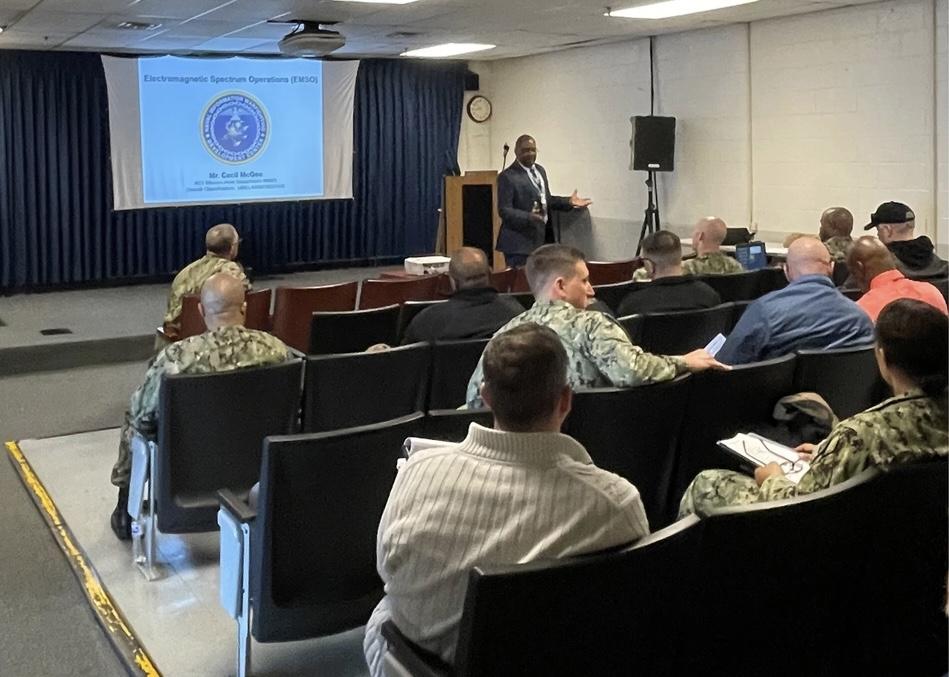Harnessing Decades of Electromagnetic Spectrum Operations Expertise
Electromagnetic spectrum operations (EMSO) have rocketed to prominence across the U.S. military, complete with their own doctrine, billets and centers of excellence. Yet decades before EMSO was formalized, spectrum managers were already orchestrating the fight in the electromagnetic environment. From the dense jungles of Vietnam to today’s congested 5G ports, they have planned, coordinated and deconflicted every hertz of spectrum space so operators could communicate and sensors could function without fratricide or international incident. As the U.S. Department of Defense accelerates its EMSO initiatives, ignoring the hard-won experience of this community risks repeating mistakes the force cannot afford.
Spectrum Management: The Original EMSO
Well before EMSO entered the lexicon, spectrum managers synchronized combat power by weaving radios, radars, data links, electronic warfare pods and even commercial leases into a single, coherent frequency plan—often under severe time pressure and with only fragmentary situational awareness. In battle, they monitored the airwaves continuously, reallocating assignments as units maneuvered or unexpected interference appeared. What the EMSO doctrine now calls “operation and battle management” has been daily practice for spectrum shops since the Cold War.
Spectrum manager responsibilities, however, extend far beyond the battlefield. In peacetime ports and airspace—where the U.S. military spends most of its time—every transmission must comply with host-nation law and International Telecommunication Union (ITU) regulations. Spectrum managers are the guardians of those diplomatic relationships, fluent in filing windows, footnotes and coordination zones. By persuading regulators and allies, they keep ships at sea and aircraft in the air without the embarrassment of an unauthorized emission.
Equally critical is their role in electromagnetic interference resolution. Long before slick dashboards promised space command and control, spectrum managers traced a crackling spark gap or a desensitized radar back to its source, whether a corroded power line or a clandestine jammer. The investigative instincts they refined through direction-finding and regulator liaison still matter today; automated analytics can flag anomalies, but it takes political savvy, technical acumen and persistence to close the loop and restore mission systems to full strength.
Lessons EMSO Should Leverage
The first lesson is that integrated planning must begin the moment a concept of operations is sketched. Frequency deconfliction conducted up front prevents the last-minute scramble that so often forces commanders to curtail fires, shift networks or cancel training. Second, real-time command and control of the electromagnetic environment relies on a single, authoritative database—exactly the sort of tool spectrum shops have maintained for decades. When permissions, expirations and points of contact live in one place, rapid retasking becomes routine instead of crisis-driven.
A third takeaway concerns coordination outside the wire. Commercial carriers, coalition partners and host nations are not simply “noise” in the spectrum; they are stakeholders whose cooperation grants or denies access to ports, airfields, and intelligence, surveillance and reconnaissance corridors in gray-zone crises. Spectrum managers already treat them as mission partners, an approach EMSO teams would do well to emulate. Finally, compliance is not a bureaucratic hurdle but a facet of mission assurance. Mapping every planned emission to an ITU article or bilateral agreement preserves alliance cohesion just as surely as it avoids fines.
Bridging Cultures Without Reinventing Them
Instead of erecting parallel EMSO nodes, the easiest way to gain momentum is to embed electromagnetic warfare officers inside existing spectrum shops. That fusion translates tactical intent into lawful, interference-free execution and speeds decision cycles at negligible cost. Institutional pathways should follow suit; a tour in spectrum management ought to rank alongside cyber or intelligence rotations as a rite of passage for EMSO practitioners.
Modern toolchains can also evolve rather than restart. Joint automated communications-electronics operating instruction systems and service-specific frequency managers already store accredited data; layering EMS analytics atop these platforms is faster and cheaper than deploying entirely new architectures. Finally, the “gray-haired gurus” who learned their craft on analog gear remain national assets. Capturing their heuristics in doctrine, simulations and mentoring pipelines is urgent business before retirements erode that reservoir of insight.
Conclusion
In the high ground of modern conflict, milliseconds and milliwatts can decide victory. Spectrum managers have been safeguarding both for generations. Their expertise—spanning combat synchronization, legal diplomacy and enterprise interference response—forms the bedrock upon which EMSO should build. Pulling a chair up to the spectrum manager’s desk is not merely courteous; it is essential for a force determined to dominate the electromagnetic environment without relearning lessons already paid for in time, treasure and operational risk.
James E. Ortega is the director of the Navy and Marine Corps Spectrum Center (NMSC).




Comments